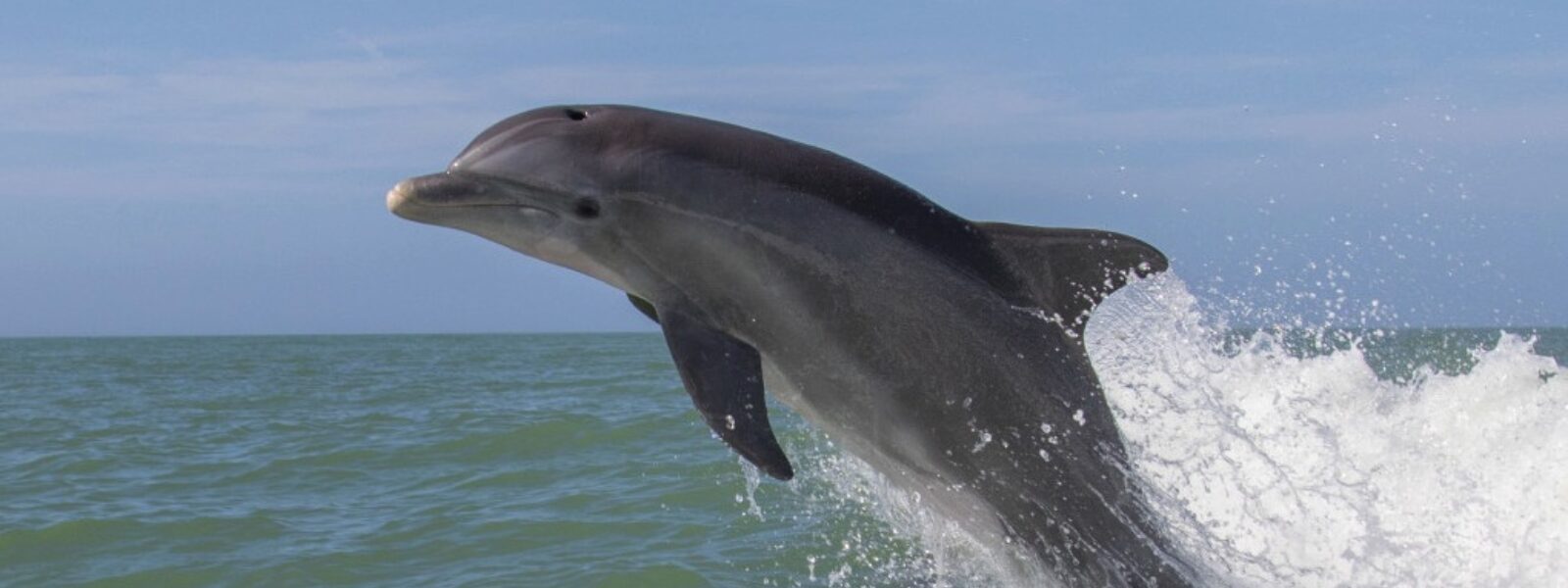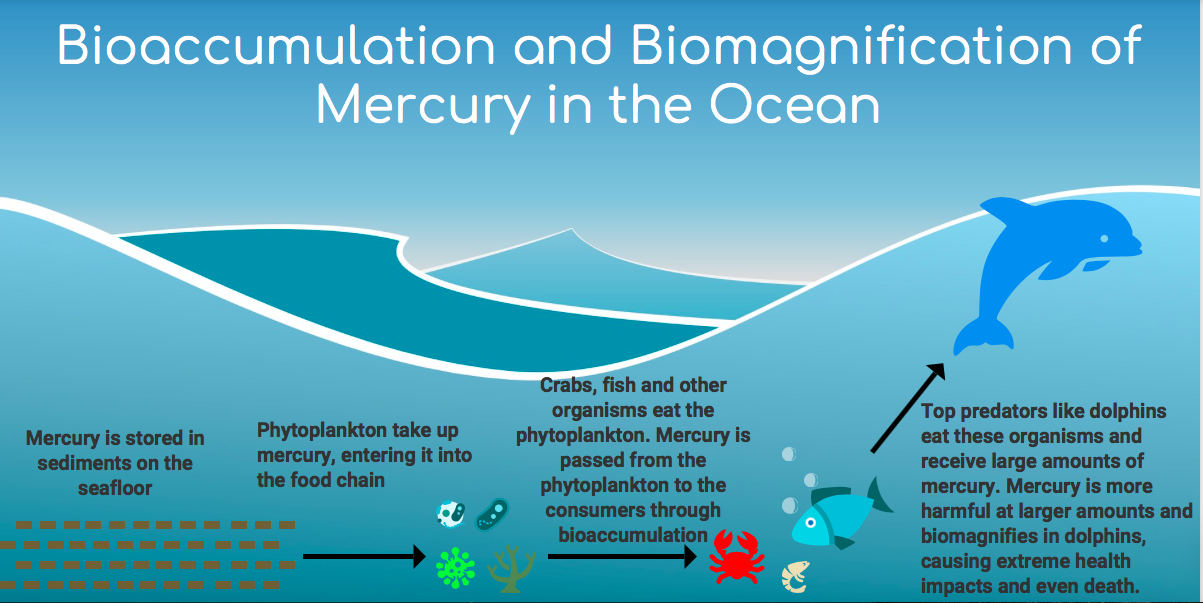

Tara Van Hoorn is an intern with the International Marine Mammal Project (IMMP) of Earth Island Institute and majors in Conservation Resource Studies at the University of California, Berkeley.
Mercury poisoning is a destructive and sometimes fatal condition, yet humans are not the only ones that experience its harm. In fact, dolphins have many of the same symptoms that humans do when exposed to high levels of mercury. Instances of dolphin mercury poisoning are becoming more common as human consumption of fossil fuels skyrockets, as the burning of coal releases mercury into our atmosphere and our oceans.
Mercury has increased by roughly 10% in the entire ocean since the Industrial Revolution and about 30% over the last twenty years in the North Pacific Ocean, according to the U.S. National Science Foundation. These rises in mercury levels can ruin entire ecosystems around the world by taking out top predators like dolphins. Mercury is the most toxic substance known, next to plutonium.
Mercury poisoning is the result of exposure to dangerously high amounts of mercury. In numerous cases around the world, dolphins exposed to high levels of mercury were seen to experience neurological damage, immunosuppression, and changes in behavior and reproductive issues. These are the exact same symptoms humans experience from mercury poisoning.
Due to the behavioral changes caused by mercury poisoning, dolphins can become anorexic and fail to consume enough food, resulting in death. Similarly, the immunosuppression caused by mercury poisoning oftentimes results in death because their weakened immune systems are incapable of fighting off common diseases. Spinner dolphins in Baja California, striped dolphins in Italy, and harbor porpoises in Wales all exhibited these health effects from mercury poisoning, proving this issue is widespread both geographically and among different cetacean species.
Researchers Reif, Schaefer and Bossart found that Bottlenose dolphins in the Indian River Lagoon on Florida’s Atlantic coast experience different levels of mercury exposure depending on where they live in the river. Dolphins living in the south of the river were found to have much higher mercury levels than those living in the northern river. The southern part of the river has been greatly developed by humans and receives much more runoff and pollution from the coastal towns, meaning there is more mercury being deposited there. Humans play a significant role in how much dolphins are impacted by mercury poisoning, and our exploitation of resources is killing them around the world.
Mercury in its pure form can be processed and excreted in dolphins (and humans), but very large amounts or different forms of mercury, mainly methylmercury, can cause mercury poisoning by overwhelming the body’s defenses. Methylmercury is a form of highly toxic mercury that is constructed as a result of bacterial respiration binding with mercury in sediment on the seafloor and continental shelves. This methylmercury then enters the food chain via phytoplankton and moves up the marine food web, eventually reaching dolphins.
As it moves through the trophic levels of the food web, methylmercury bioaccumulates and biomagnifies. Bioaccumulation is the process in which toxins gradually aggregate in an organism without being digested. These toxins then are passed through the food web, as small fish are eaten by bigger fish, eventually reaching high concentrations in top predators like dolphins, sharks and swordfish (biomagnification). Methylmercury follows these processes as it starts in low concentrations in phytoplankton, moves up through the food chain, and culminates in very high concentrations in tertiary consumers like dolphins. Methylmercury usually accumulates in dolphins’ livers because of their detoxifying capabilities, but the dolphin livers cannot handle large amounts of mercury, causing damage to the rest of the body.
Dolphin meat contaminated with mercury is still being sold for human consumption in Japan, putting people, such as the residents of Taiji, at risk of suffering the same way these dolphins are. In fact, Japanese dolphins were found to have the highest mercury counts internationally due to poor practices of heavy metal management and contamination. These Japanese dolphins are suffering double the damage, as they are being poisoned with mercury and slaughtered for the meat market. One of our main goals at IMMP is to end the dolphin killings in Japan, and this mercury poisoning further supports why these dolphins need to be protected from the dangers of human activity.
Like many issues in the ocean, mercury poisoning in dolphins is caused by human overconsumption and fossil fuel use. You can start helping these dolphins today by reducing your fossil fuel consumption, especially electricity generated by coal, and promoting laws that protect our coasts from overdevelopment.
*Reif, John, et al. “Atlantic Bottlenose Dolphins (Tursiops truncatus) as A Sentinel for Exposure to Mercury in Humans: Closing the Loop.” Veterinary Sciences, vol. 2, no. 4, 2015, pp. 407–422., doi:10.3390/vetsci2040407.
Photo by Shutterstock. Chart by Tara Van Hoorn.
